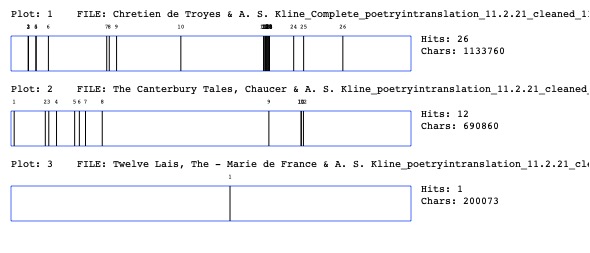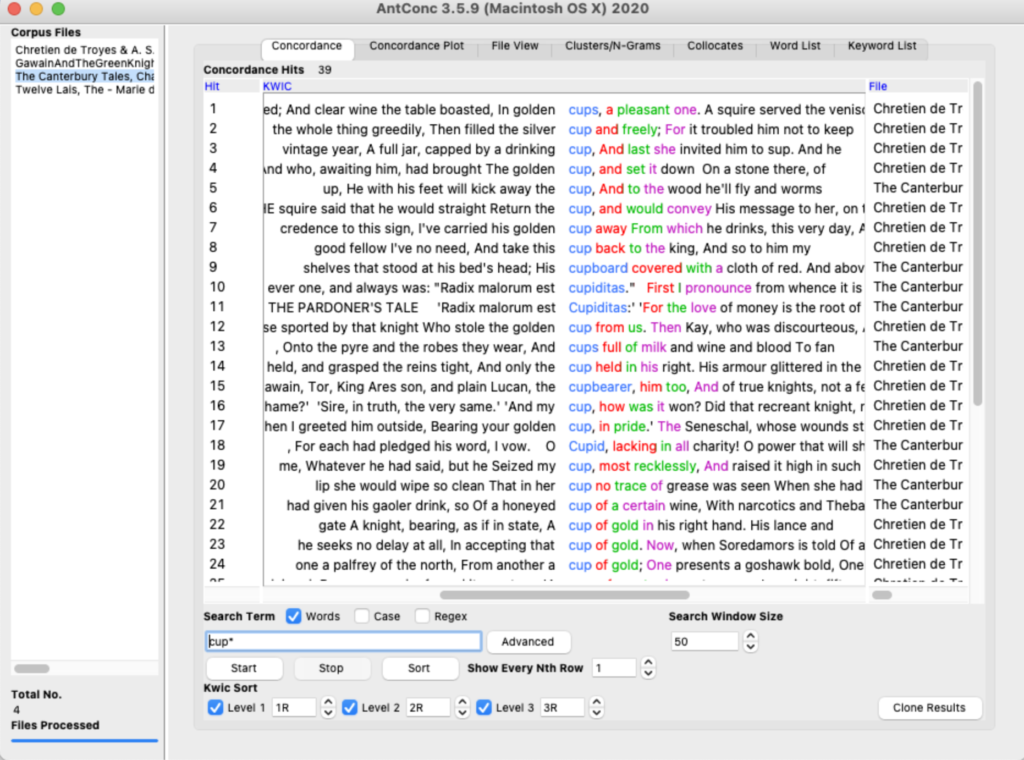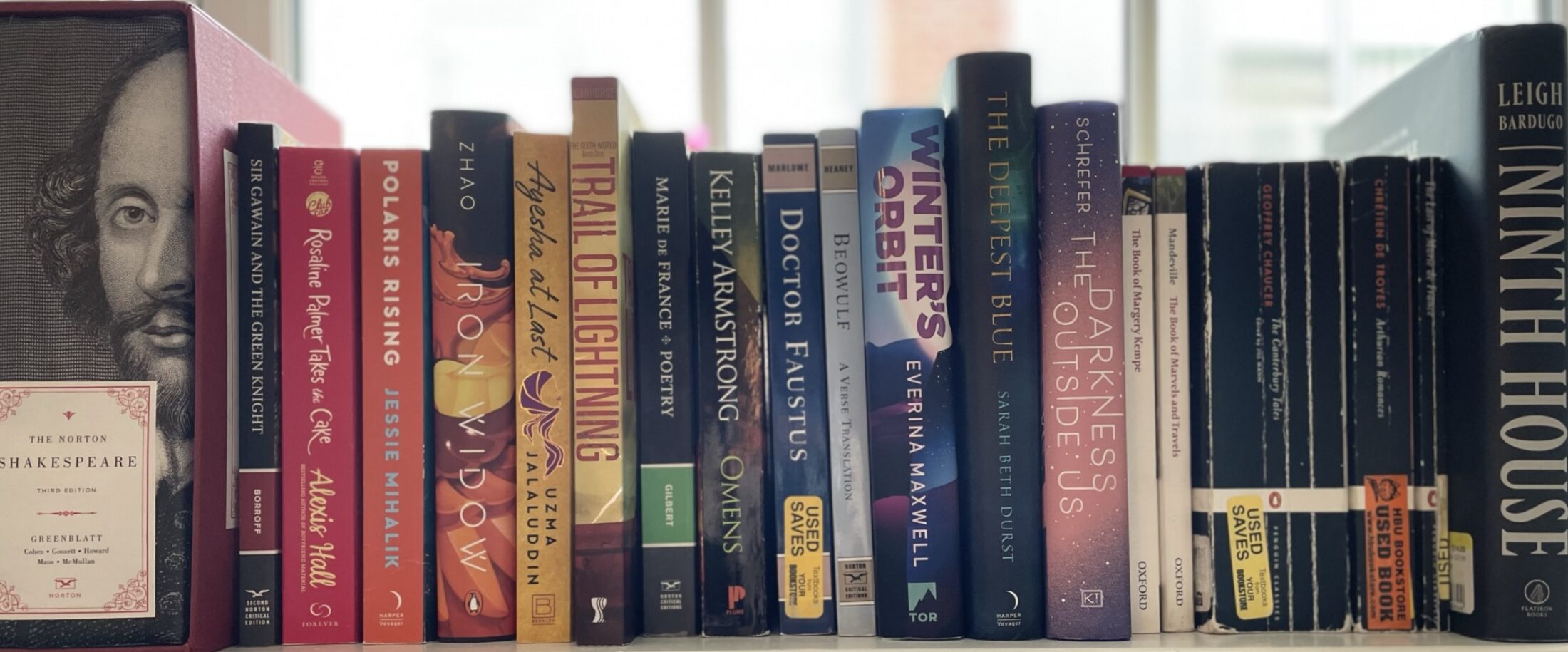I decided to use AntConc’s concordance tool to do a distant reading of the corpus by searching object words. The concordance tool shows a list of each appearance of a word in the corpus with the immediate context of the word. I also created a concordance plot, showing the number of times a word appears in each text in a corpus, for each search term. * is a wildcard that will return all appearances of the root and any following characters as a connected string. The below chart details object terms and their total number of appearances in the corpus.
| Object Terms | Cloth* | Dress | Belt* | Embro* | Ring | Cloak* | Coat | Bed* | Sheet* |
| Total # Appear | 157 | 41 | 34 | 20 | 78 | 36 | 42 | 221 | 27 |
| Object Terms | Potion* | Charm | Armour | Sword* | Shield* | Lance* | Spear* | Book | Cup* |
| Total # Appear | 31 | 30 | 151 | 173 | 235 | 199 | 37 | 85 | 39 |
The following distant readings provide possible avenues for further study that may be examined using a statistical approach in the following pages. Select the word or down-carrot to expand the analysis for a view of each object term.
Object Word and Visualizations
Clothing and Accessories
I searched cloth* to encapsulate cloth, cloths, clothing and found the words Silk*, Fine, Weave, Fresh, Scarlet, Better, Linen, White, Enriching, Gold*, and Clean were used to describe the cloth variants in the corpus. Cloth serves multiple purposes in the text, however, when the text describes the material, it is to note the color, quality, or cleanliness.
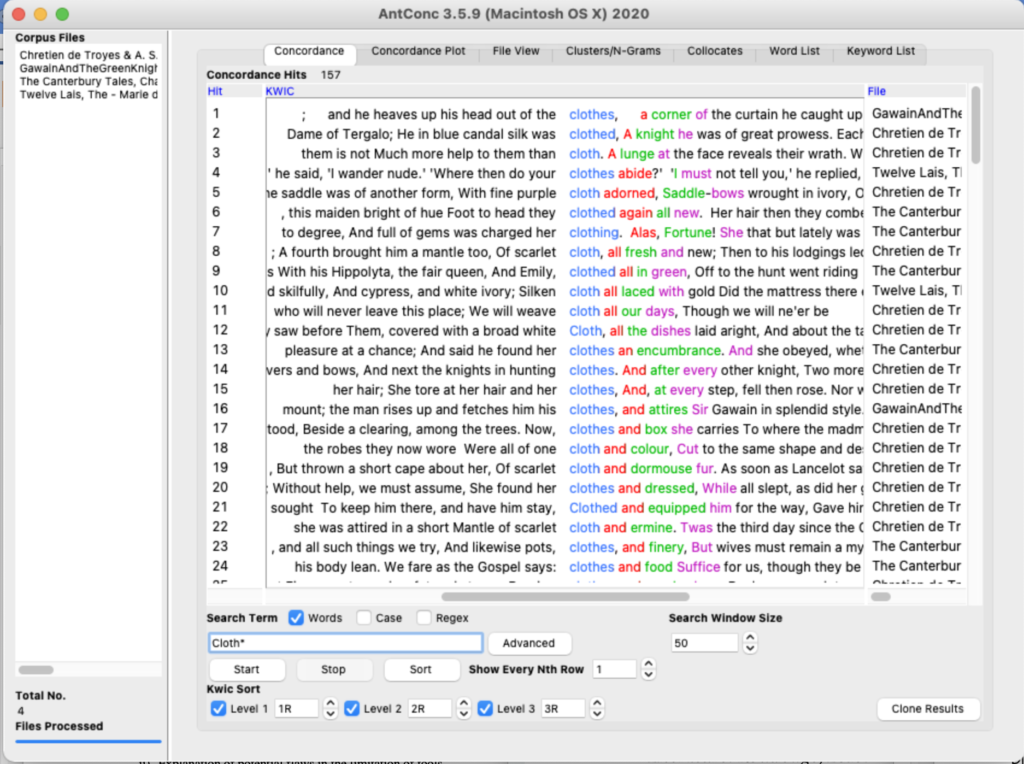
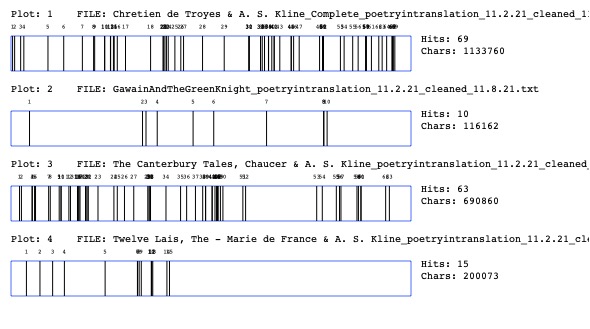
Searching dress in these texts falls within three categories. Dress here means three things to dress as in to put on clothing, dress as in dressing meat, dress as in the clothing itself. In the instances where dress refers to clothing, the words Hunting, Fine, Becoming, Laces, Clasp, Green, Silk, Satin, Fair guise, Fittingly, White, Rich, and Linen appear. Clothing dress involves closures like laces and clasps. And much like cloth, the quality or color of the dress is vital to the description in the corpus.
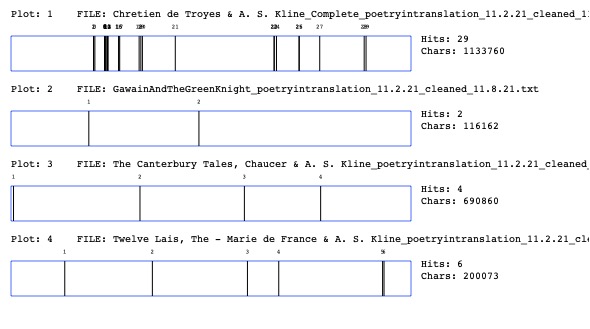
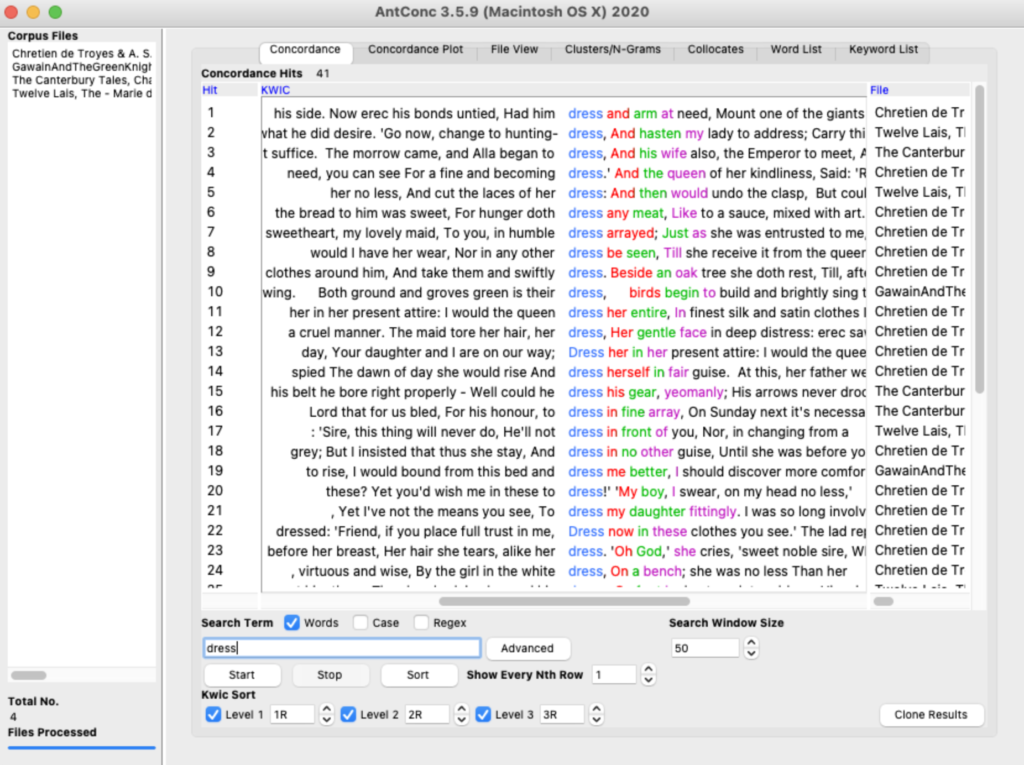
I searched belt* and found the word associated with Gold*, Silk sword-(belt), Bright, Sword-(belt), Strange, Handsome, and Silk. The search indicates belts act both as fine pieces of adornment and useful harnesses for weaponry.
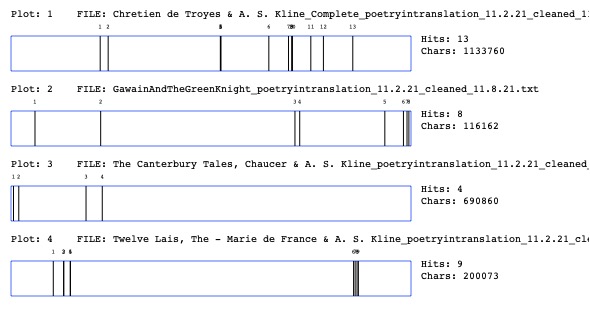
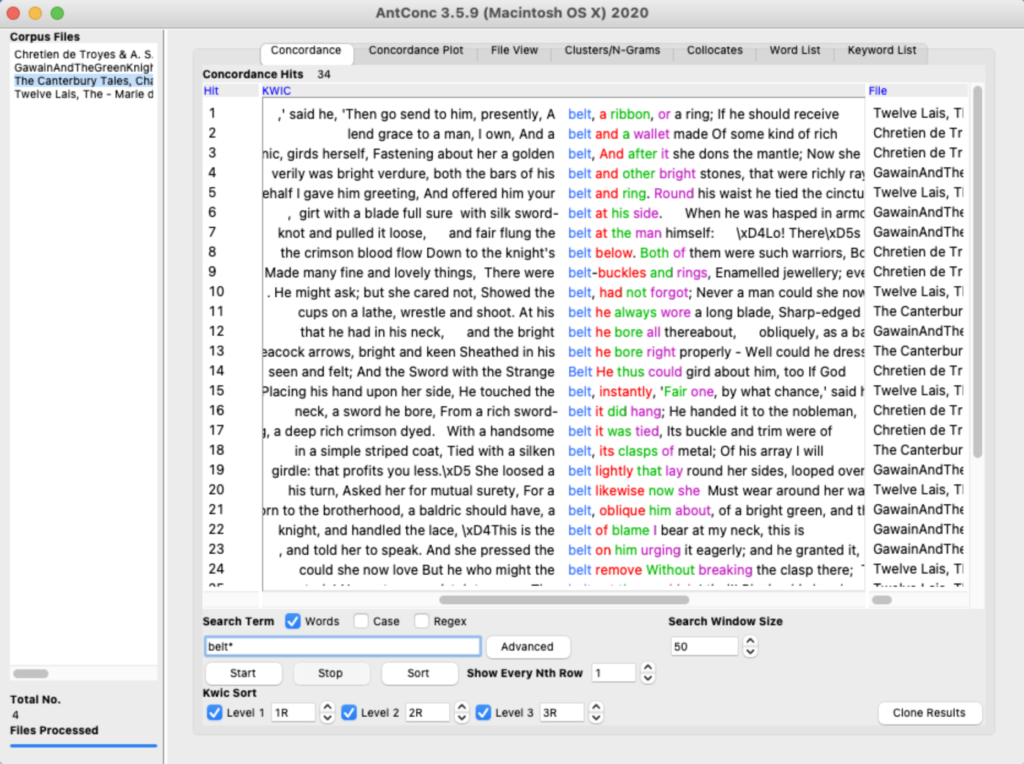
I also searched embro* to cover embroidered and embroidery. Although there were only 20 results, the results were interesting with the words Birds, Butterflies, Gems, Goldsmith’s art, Gold*, Silken thread, Silk, Bright, Brown, Full, Rich, Cushions, Seams, Flowers, Curtains, Small, Diverse colours, Clothes, Finger-stitching, Purple, Green, and Little crosses. There are embroidered items in all four texts and each defines different details of embroidery.
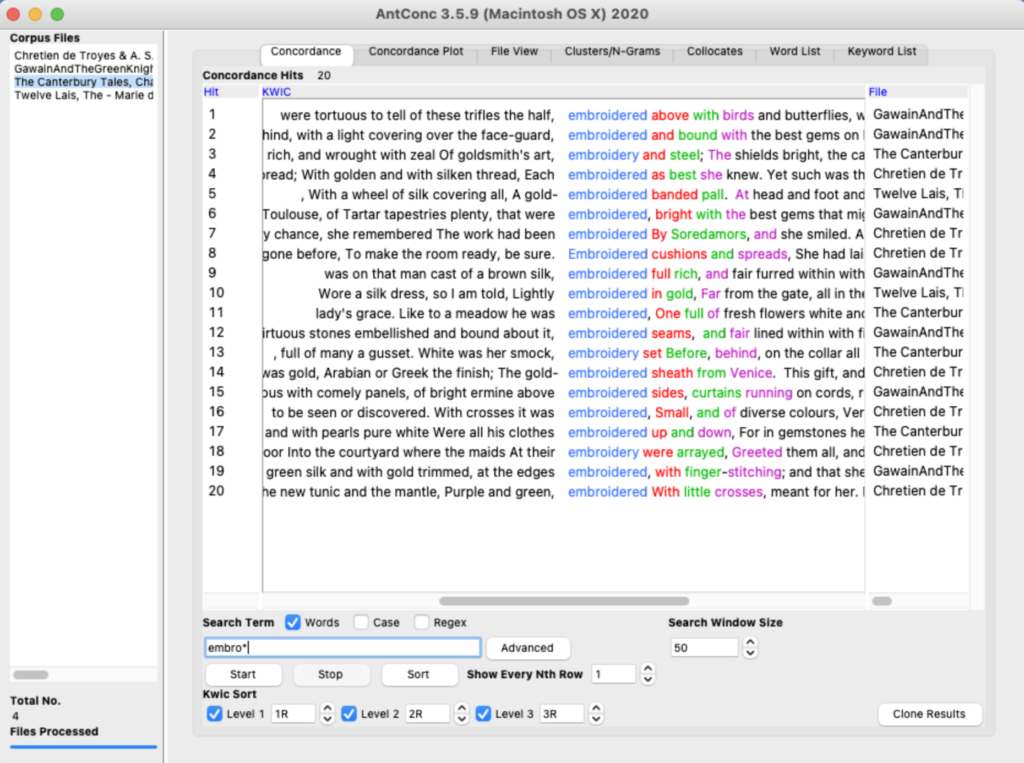
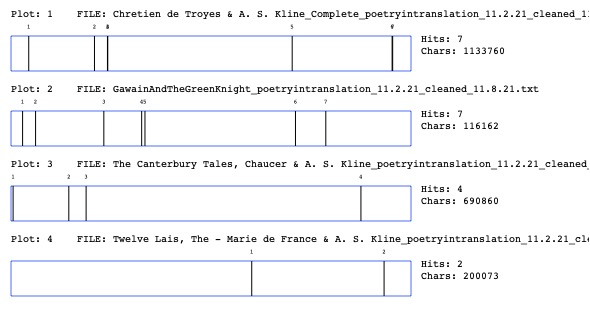
Searching ring came up with the associated words Gold*, Curious, and Wedding. Sometimes ring is used to denote sounds like a bell, trumpet, or singing. Although ring is a relatively frequent word, it is more likely the text is referring to noise over a wedding ring or a piece of jewelry.
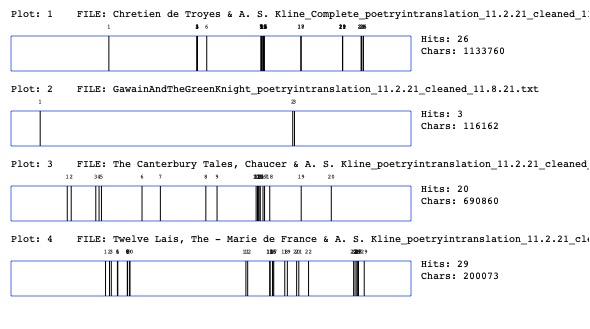
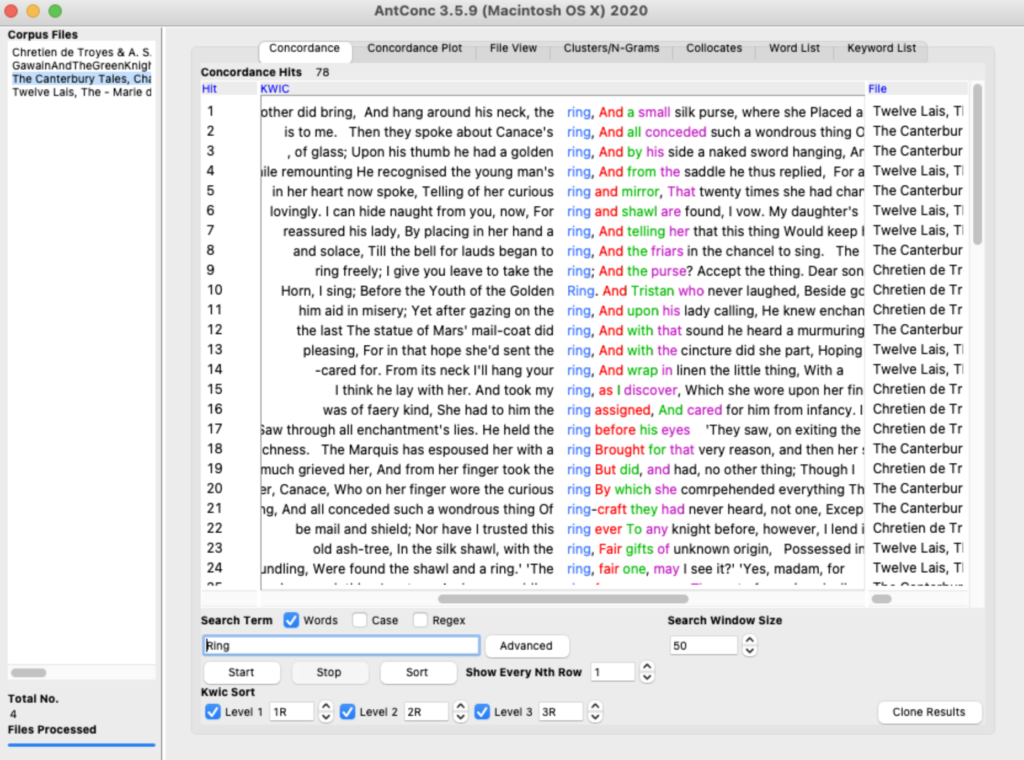
Searching cloak* came up with the associated words Demi-, Finery, Sewn, Old, Black, Ermine, Vair, Grey, Threadbare, Scarlet, Silk, Short, Humble, Elegant, and Armour. Similar to cloth and dress, cloaks denote color and quality, however, cloaks appear to have more variation in their description of class. From a warm expensive ermine to the cold inexpensive threadbare cloak, the texts indicate importance to external dress in Chrétien de Troyes, Geoffrey Chaucer, and Marie de France’s work.
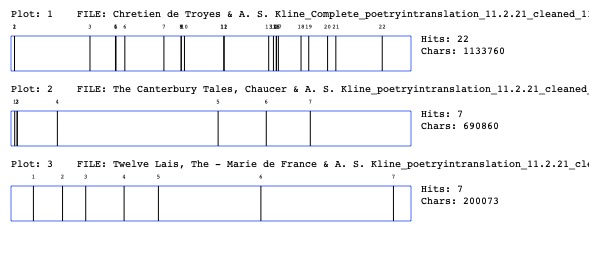
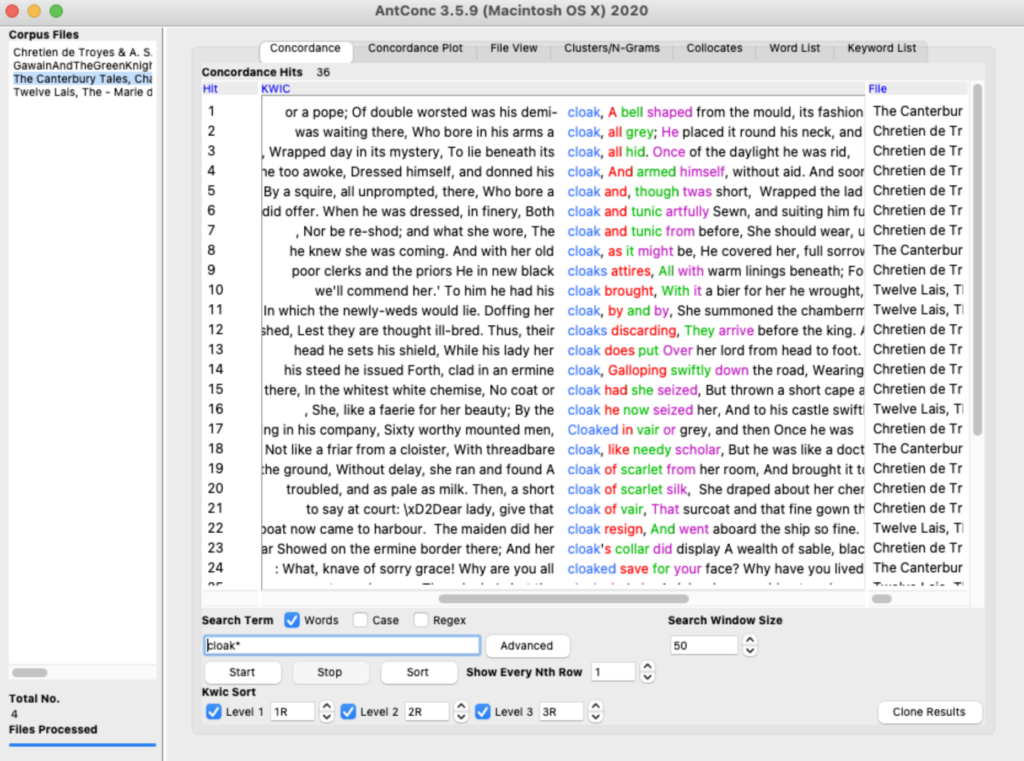
Searching coat came up with the associated words Mail, White, Armour, Rich, Top, Straight, Hunting, Snug, Iron, (Coat) of arms, (Coat) of mail, Fine mail, and Silk. Coats appear to indicate a variety of garments from topcoats or hunting coats to mail or armour. However it is important to note, there are no coats in Marie De France’s work.
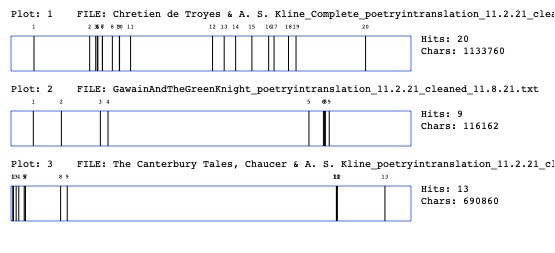
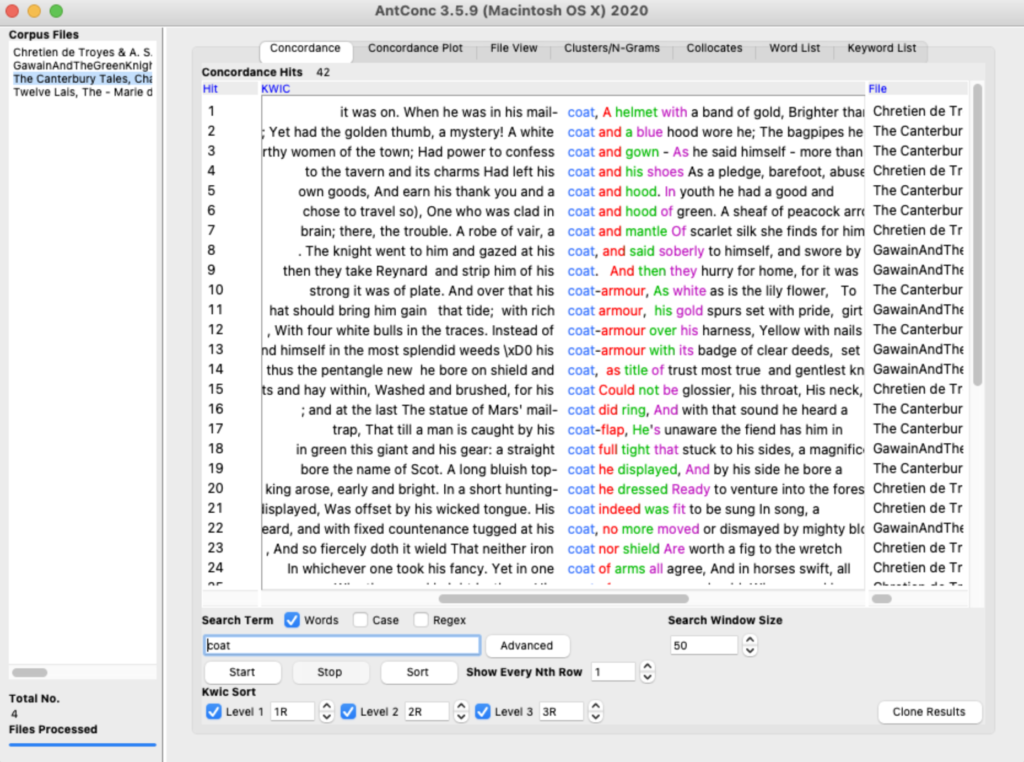
Magical Objects
Potion* did not have many results at 31 and included descriptors like Power, Sleeping, Medicine, Strengthening, Brewing, Tempering, Stewing, and Imbibed. Potion also does not appear in Sir Gawain and the Green Knight, perhaps because the magic in the text involves no elixirs or potions. It is interesting how potions are described as a powerful medicine, sleep-inducing, or merely described by the process of their creation.
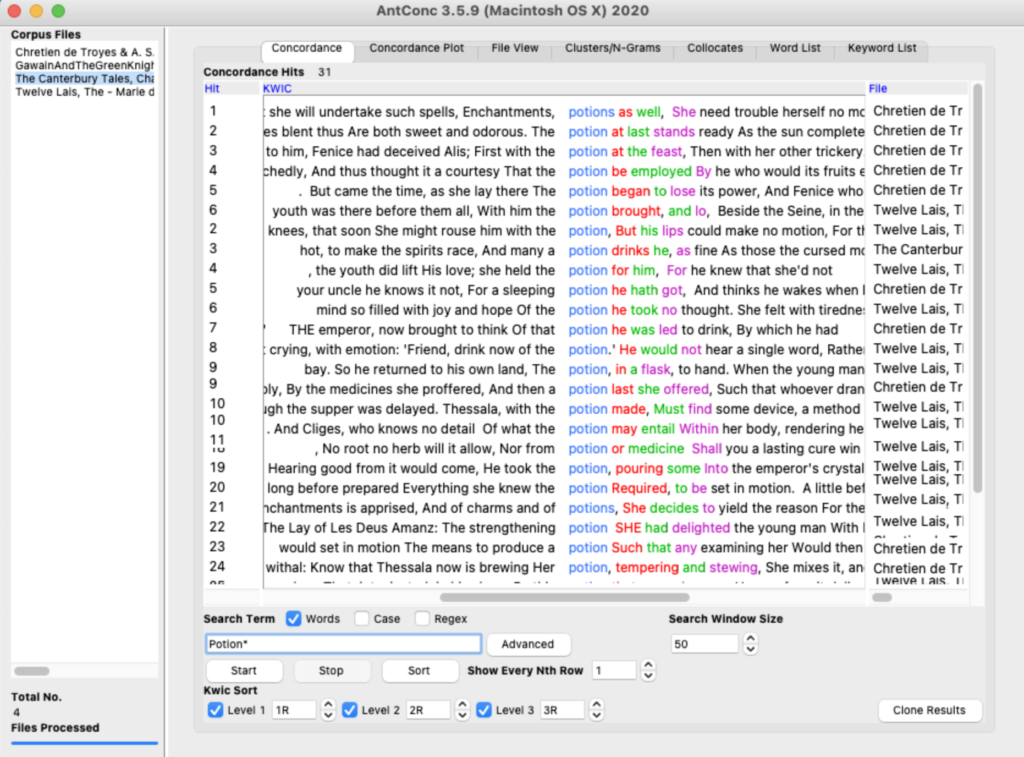
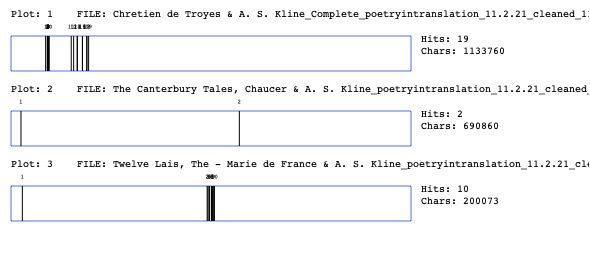
Charm also only had 30 results and is sometimes used affectively to indicate someone is charming. In other instances, charms were described as powerful. While I had hoped to do a distant reading of magic in the text, the lack of results indicates questions of magic may be served best by different tools.
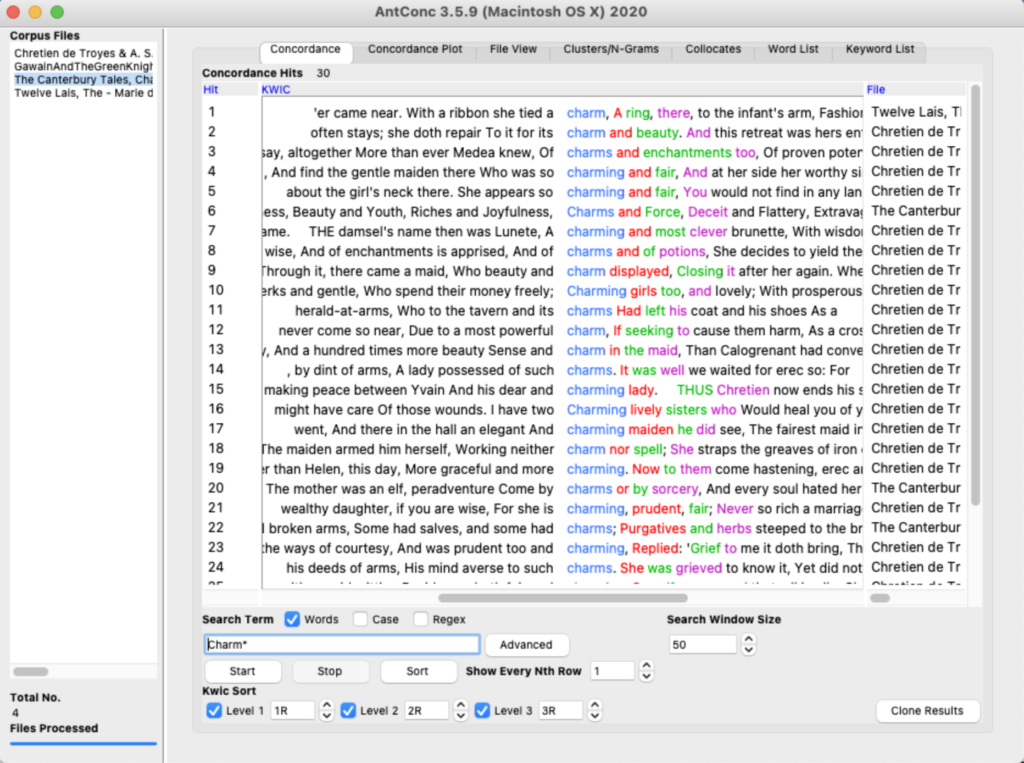
Arms and Armour
Armour is associated with descriptors like Bright, Fine, Vermilion, Solid, Knight’s, New, Fill, Red, Bear, Coat-, Crimson, Green, Plate, Suits of, Glittered, Black, Rich coat, and Full. Here, the quality of armour appears through bright colors, intricate details, and newness.
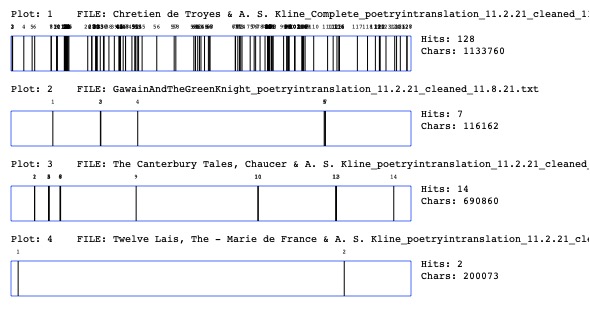
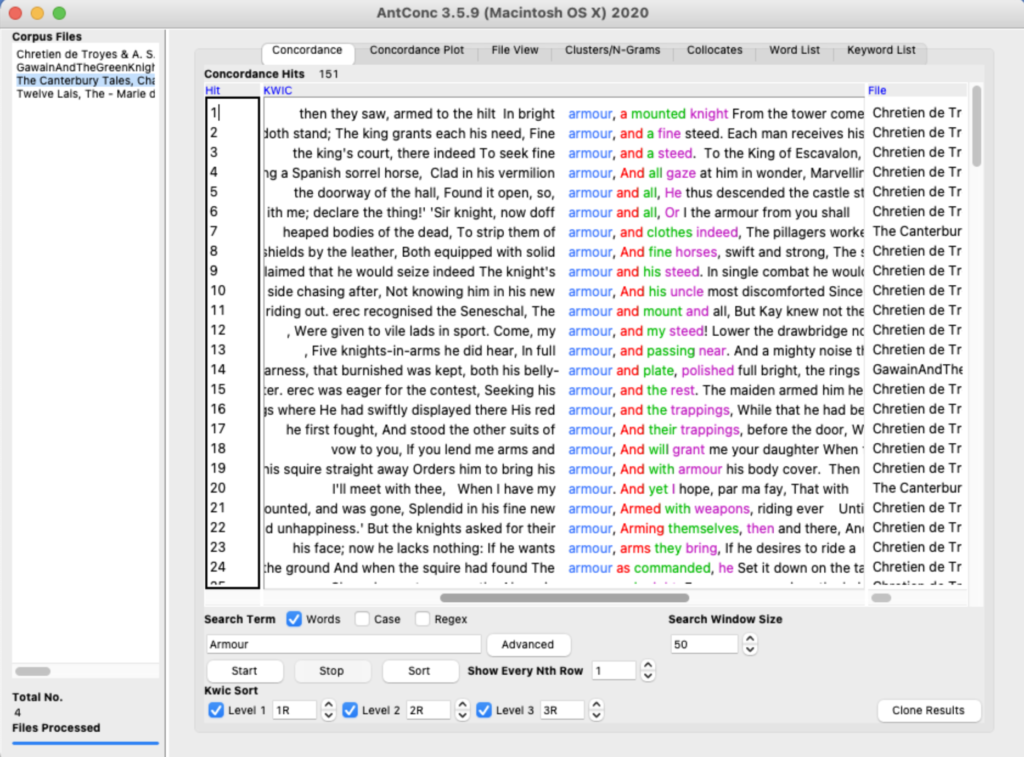
Sword* is also interesting with descriptors like Sharp, Bridge of the, Drawn, The art, Bright, Good, Long, Fine, Precious, Naked, Sharp, Of winter, Crimson blood, and Cold. In the swords appearances through the corpus, the brightness and sharpness note the aesthetic value alongside the use-value of a sword.
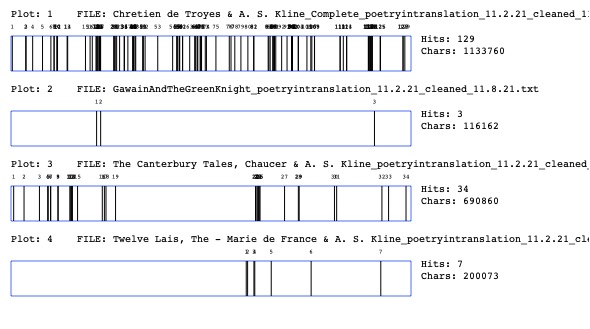
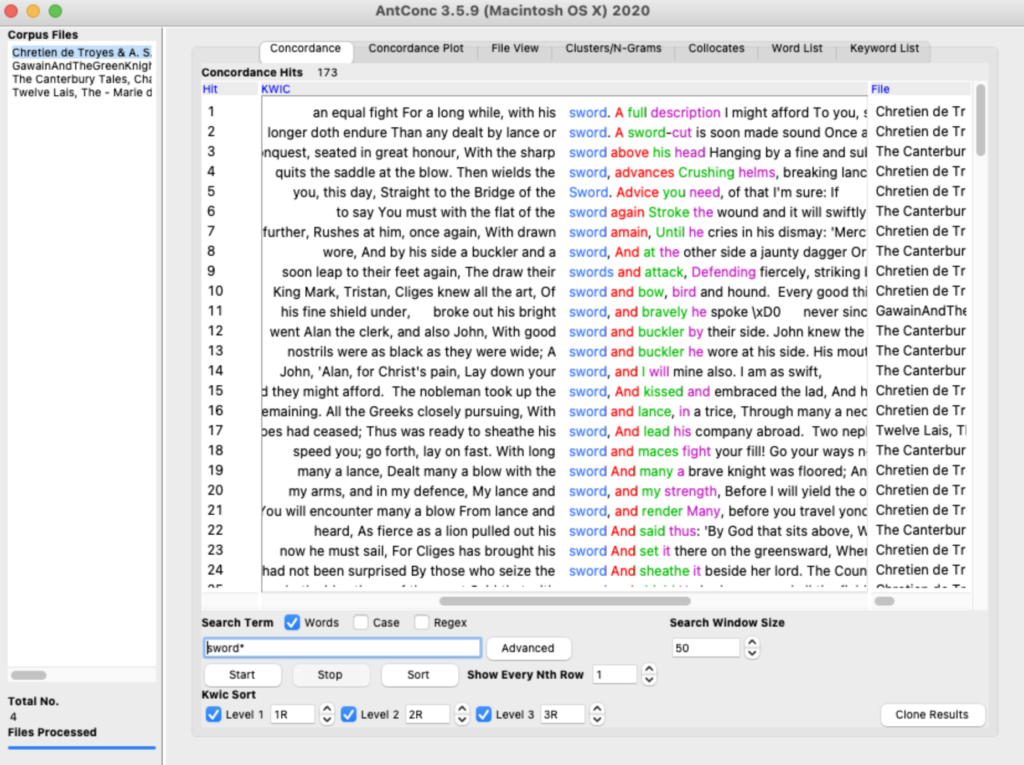
Shield* is associated with decorative descriptions like Painted yellow, Red, Vermilion, Painted, Leather, Fresh, New, Shining, and Gold. The colors and materials of shields appear in the corpus.
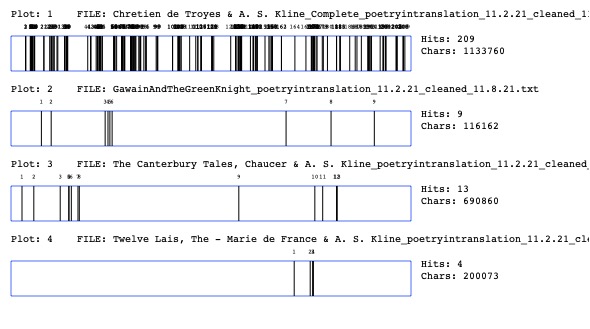
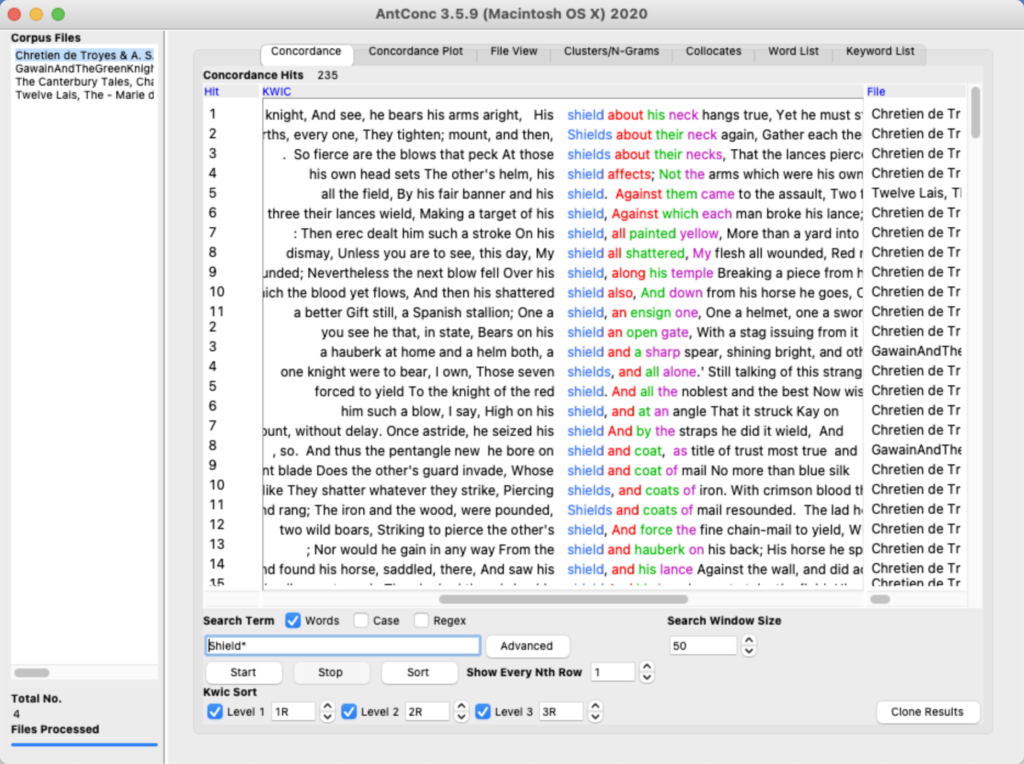
I could only search Lance and find the descriptors Steel point, Pennant, Ashen, Pliant, Greek, White, and Shattered. Lances are missed here because Lance* includes Lancelot. The quality or strength of lances is noted in the corpus. Please note, Lances mostly appear in The Arthurian Romances by Chrétien de Troyes with 191 of the 199 hits.
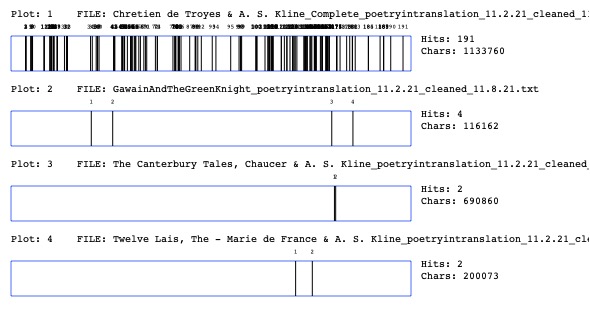
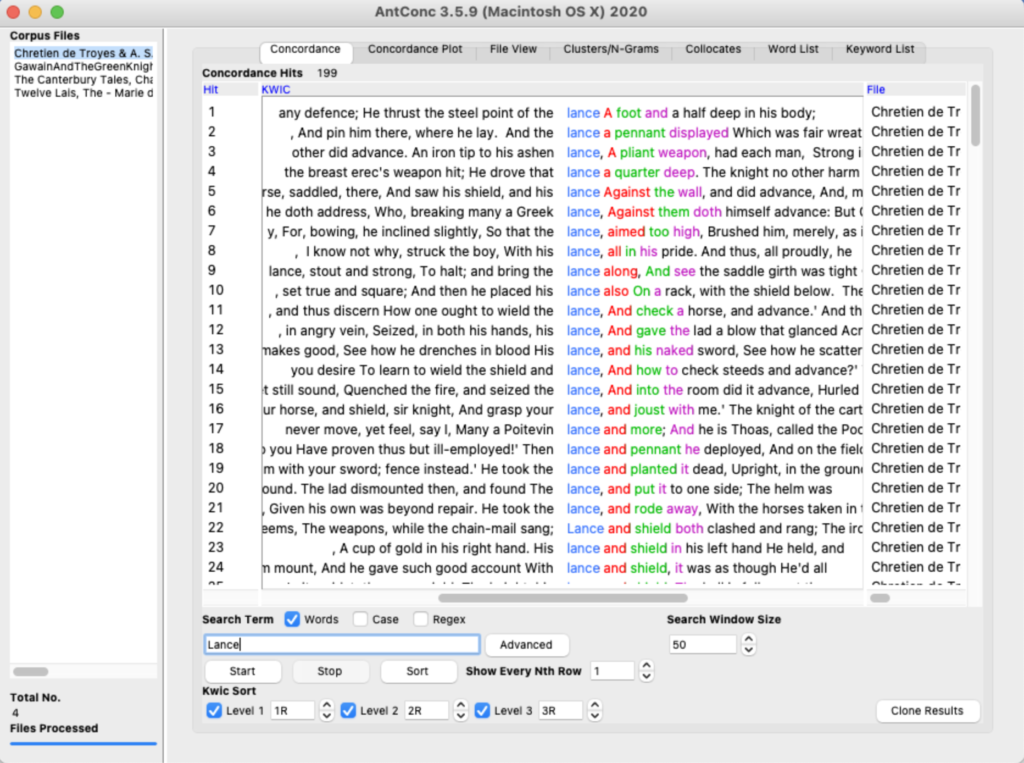
Spear is associated with Hunting, Sharp ground, Wonderous, Broken, Sharp, and Shining bright. Here, spears also show quality or strength, similar to lances.
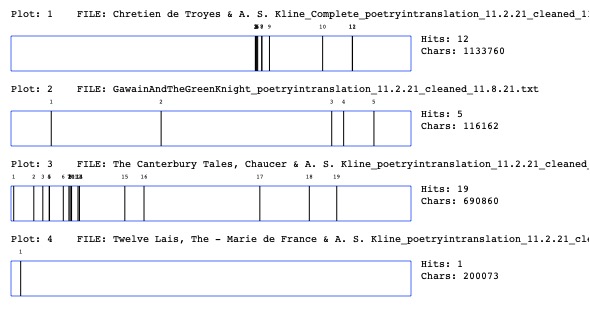
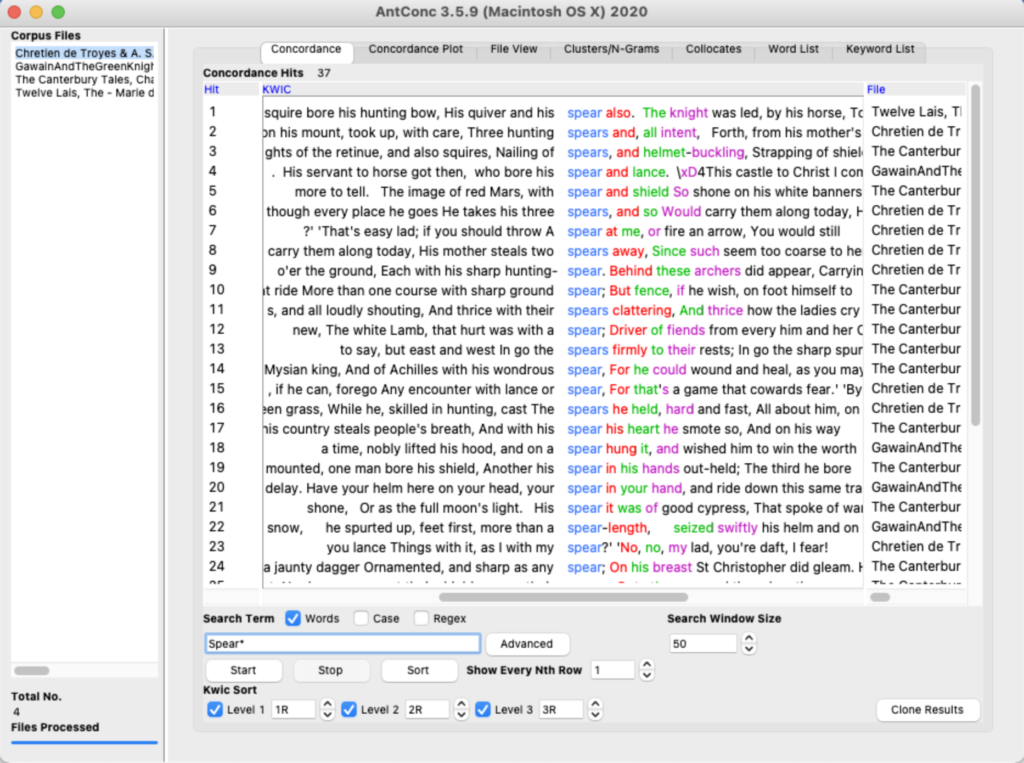
Household Objects
Searching Bed* came up with the associated words Maiden, Straw, Corser, Feather, Comfortable, -chamber, Royal, Silver, Grassy, Bridal-, Lover’s, King’s, Scholar’s, and Marriage-. The descriptors indicate the bed is an interior space shared with intimate relations.
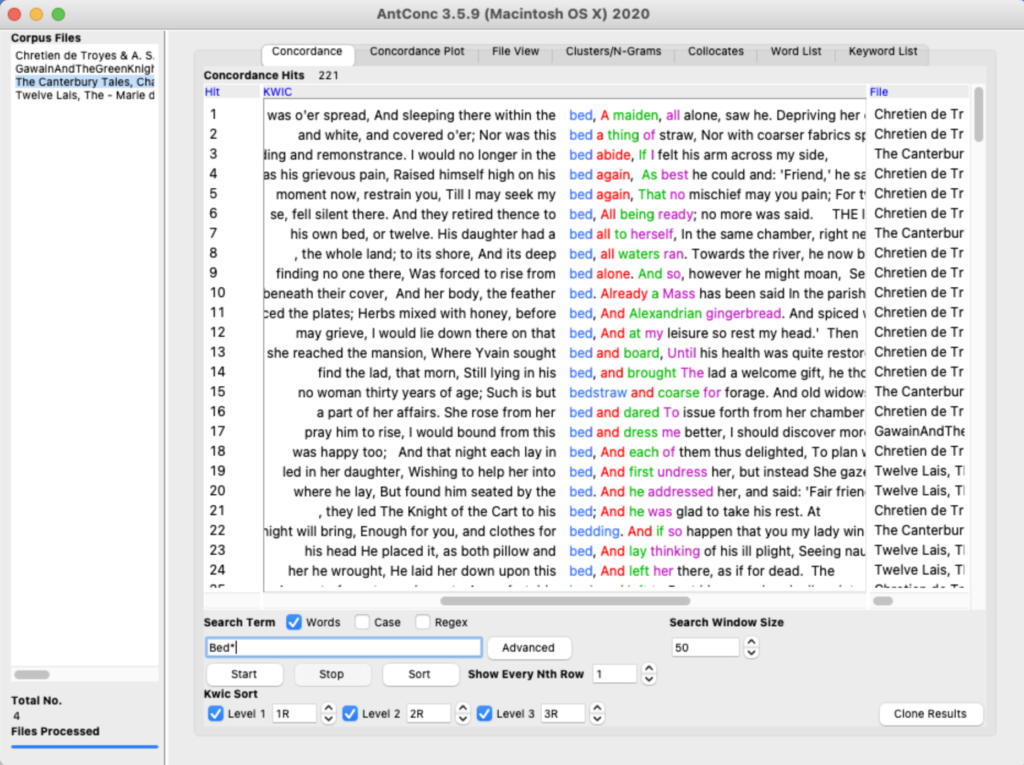
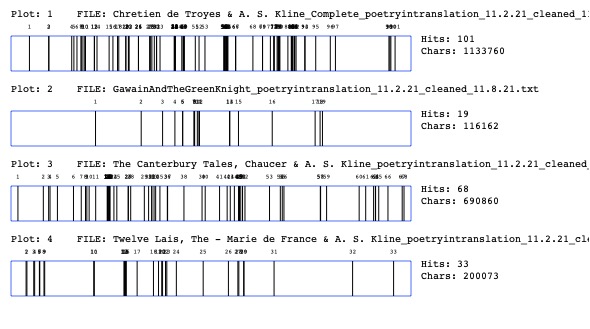
Searching Sheet* came up with Stained with blood, Blood-stained, Blood*, and White. Although there are no sheets in Sir Gawain and The Green Knight, I found the appearance of either clean white sheets or bloodied sheets in the remainder of the texts a fascinating. The sheet functions as either an expression of the purity of the interior space or a revelation of the destruction of purity through bloodshed.
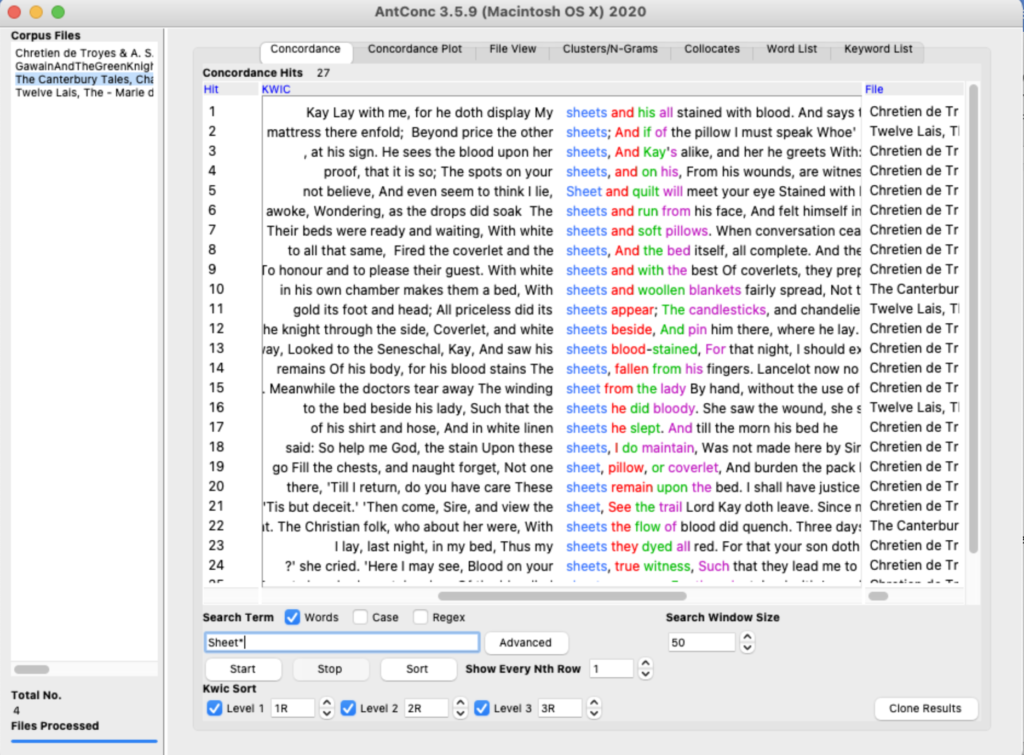
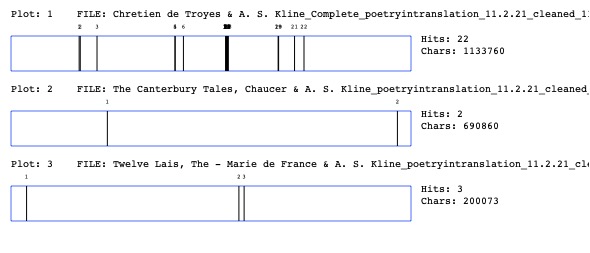
Book is associated with Cursed, Learning, Ancient, Black, Red, Gold-lettered, British, Of legend, Of natural magic, Of old, Of romance, Of wicked wives, and Of woe. These appearances look to be linked to ancient knowledge and limited examples of magic in the instances where curses, legend, and natural magic appear. The corpus referenced within the corpus could provide an interesting point for future analysis.
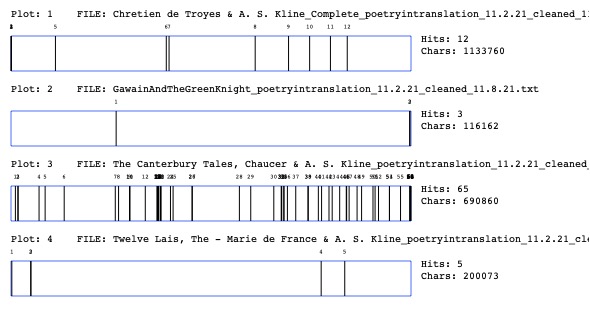
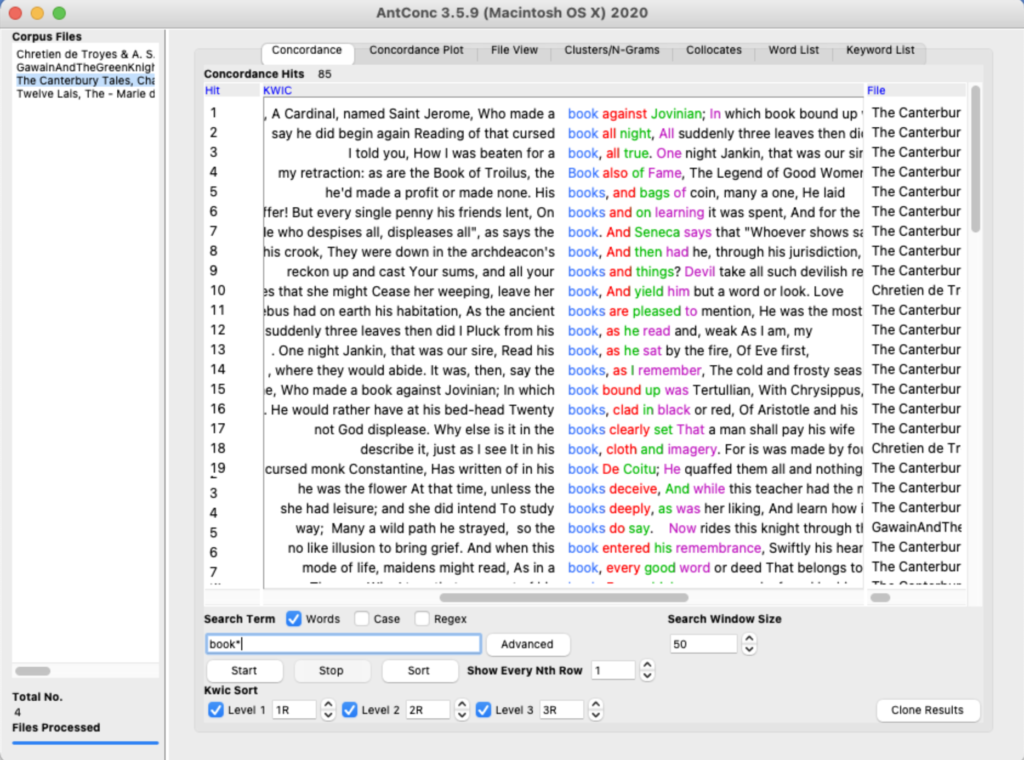
Cup* is associated with golden, silver, drinking, cupbearer, silver-gilt, worth fifteen marks, the king gifts, and valuable. Signs of wealth, class, and prestige appear to follow the notable appearances of cups in the corpus. Please note there are no cups in The Canterbury Tales.
